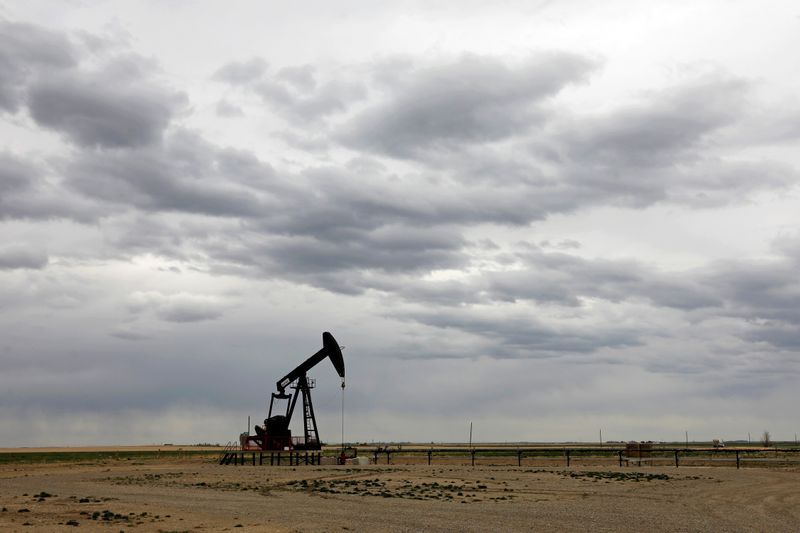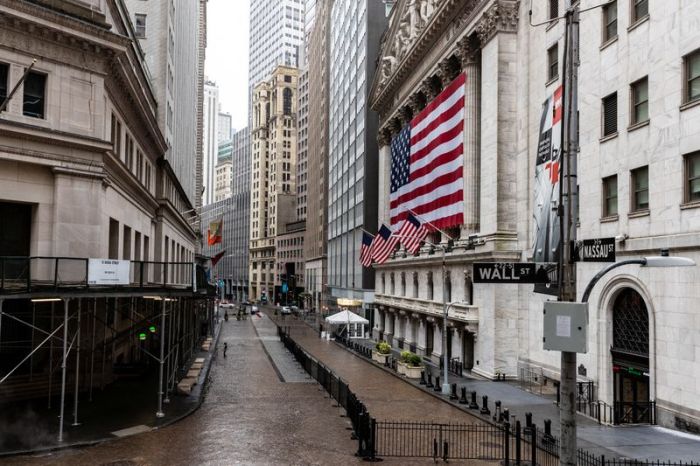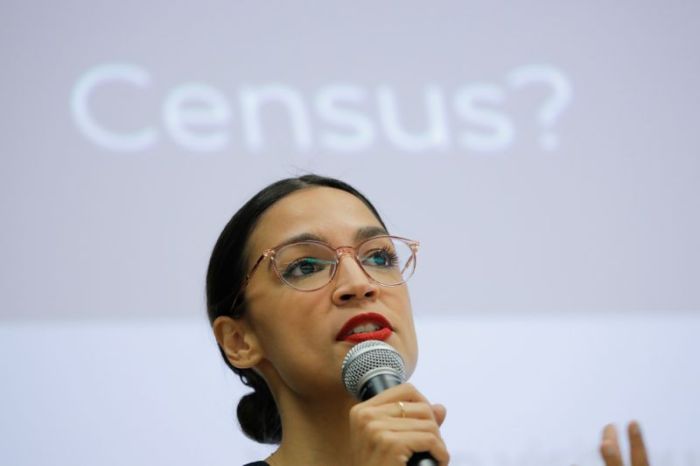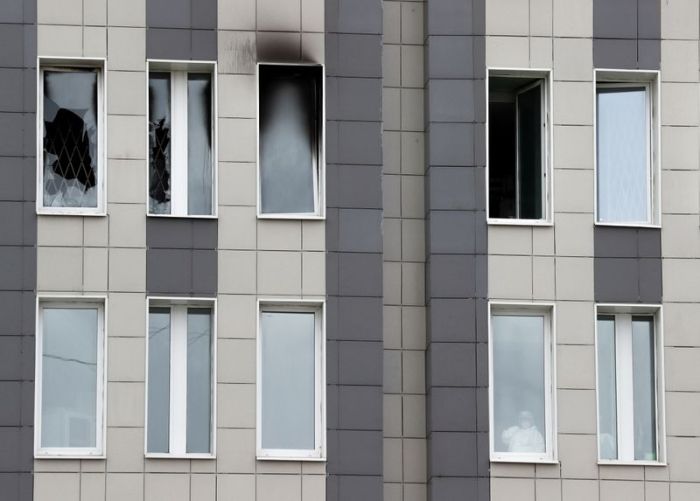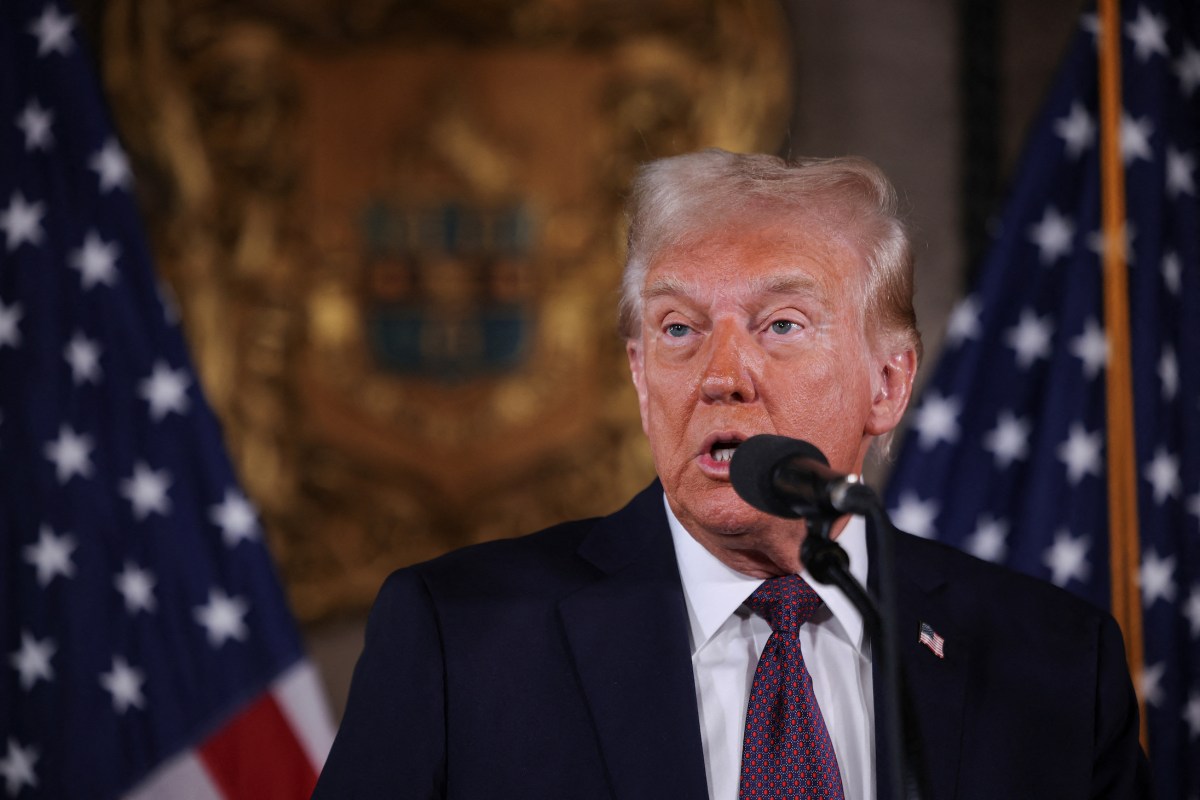NEW YORK (Reuters) – Oil prices fell about 2% on Wednesday despite the first decline in U.S. crude inventories since January, as the U.S. Federal Reserve chairman stoked demand fears with a solemn address warning the economy would take many months to recover from the coronavirus pandemic.
Oil had rallied on optimism that slumping fuel demand would recover, while producers have slashed production to cut the mounting supply glut during the pandemic. But crude slid along with other risk assets like stocks on Wednesday due to the government signals that a rebound may take awhile.
Global benchmark Brent crude settled down 79 cents, or 2.6% at $29.19 a barrel. West Texas Intermediate crude futures, the U.S. benchmark, settled down 49 cents, or 1.9% at $25.29 a barrel.
Fed Chair Jerome Powell gave a solemn assessment of the U.S. economy and renewed his skepticism of negative interest rates.
“There’s just a dark cloud because of that,” said Bob Yawger, director of energy futures at Mizuho in New York. “It was such a negative speech it even eliminated what was easily the most bullish (weekly U.S. oil inventory) report since January,” he said.
U.S. crude stockpiles <USOILC=ECI> fell by 745,000 barrels last week, the U.S. Energy Information Administration said, compared with analysts’ expectations in a Reuters poll for a 4.1 million-barrel rise.
Stocks in the Cushing, Oklahoma, storage hub <USOICC=ECI> fell 3 million barrels, the EIA said, filling the delivery point for WTI to more than 80% of capacity as producers find themselves with fewer places to store oil.
“Fears are running rife that easing lockdown measures will trigger a second wave of coronavirus infections,” said Stephen Brennoc at oil brokerage PVM.
On Tuesday, U.S. infectious disease expert Anthony Fauci told Congress that easing lockdowns could set off new outbreaks of the COVID-19 disease that has killed 80,000 Americans and slammed the world’s biggest economy.
New outbreaks have been reported in South Korea and China, where the health crisis started before spreading across the globe, prompting governments to lock down billions of people, devastating fuel demand.
The EIA now expects world oil demand to fall by 8.1 million barrels per day (bpd) this year to 92.6 million bpd, compared with a previous forecast for a drop of 5.2 million bpd.
The statistical arm of the U.S. Department of Energy expects U.S. output to fall by 540,000 bpd, against a previous forecast of 470,000 bpd. It expects global output of 11.7 million bpd this year and 10.9 million bpd in 2021.
The Organization of the Petroleum Exporting Countries also slashed its world oil demand forecast, now expecting it to contract by 9.07 million bpd this year. Last month, OPEC expected a contraction of 6.85 million bpd.
OPEC and other producers including Russia, a group known as OPEC+, are looking to maintain existing cuts beyond June, when it meets next in Vienna, sources told Reuters.
OPEC+ agreed to cut output by 9.7 million bpd in May and June and to scale back cuts to 7.7 million bpd for the rest of the year.
Saudi Arabia’s cabinet has urged OPEC+ countries to reduce output further, the country’s state news agency reported.
Riyadh said it would add to planned cuts by reducing production a further 1 million bpd next month, bringing output down to 7.5 million bpd..
“Suffice to say, the tug-of-war between OPEC-led cuts and virus anxieties will limit upside price potential,” PVM’s Brennoc said.
(Additional reporting by Ahmad Gaddar in London and Aaron Sheldrick in Tokyo; Editing by Marguerita Choy, David Evans and David Gregorio)

